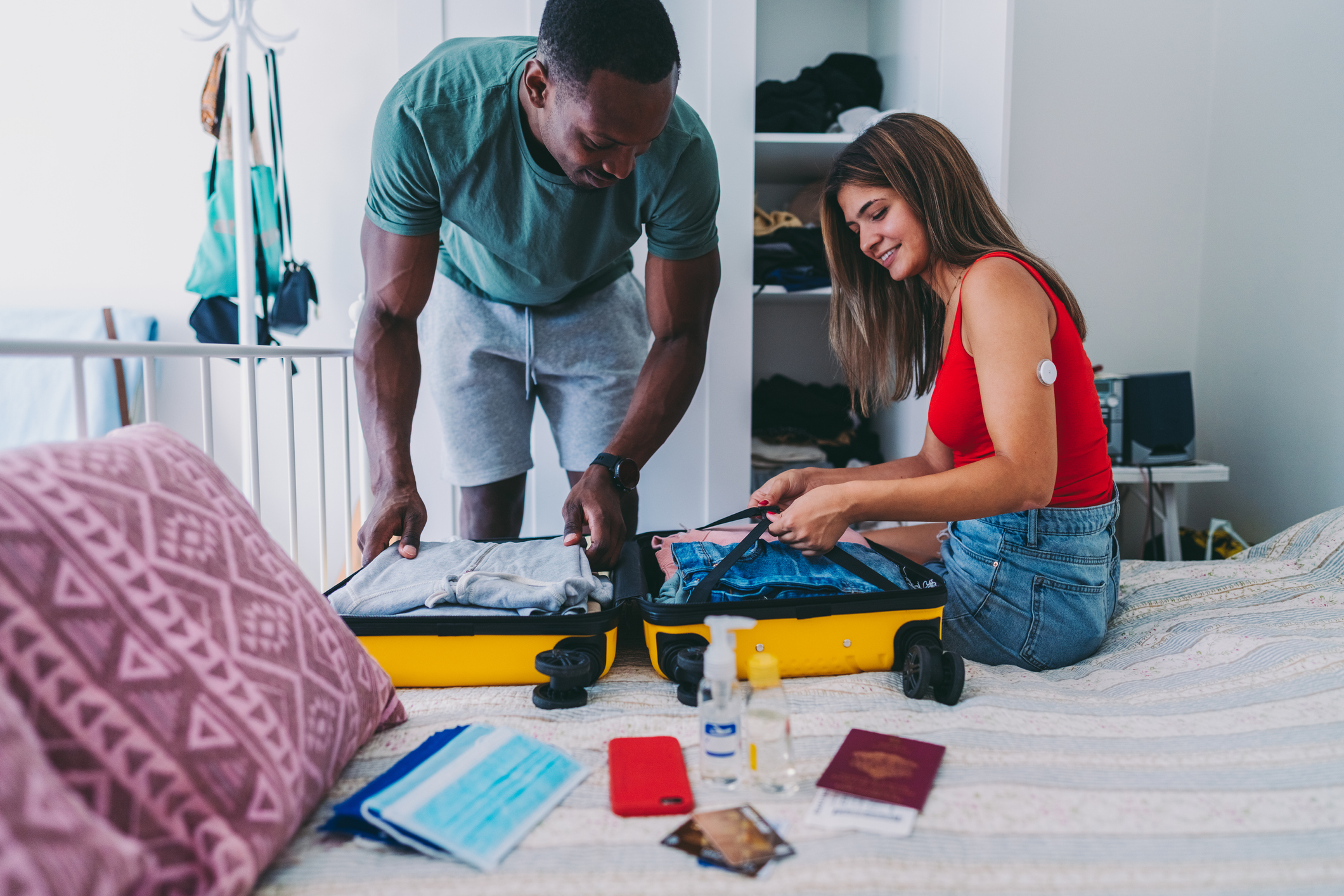10 tips for traveling with diabetes

Diabetes requires regular self-management and treatment, even on vacation. That’s why it is important to plan ahead to ensure that your next great adventure does not suspend your diabetes management.
Making sure that you are well versed on TSA rules and knowledgeable on diabetes devices/supplies best practices are some great ways to start.
Whether you are newly diagnosed or just need a refresher on travel accommodations for people with diabetes, here are 10 helpful tips for your next trip.
Check in with your diabetes care provider
When in doubt, schedule an appointment with your diabetes care provider to discuss how your diabetes management may change while you are traveling. Your provider can let you know if your travels require any immunizations.
Ask your doctor for a letter detailing your diagnosis, how your diabetes is treated and what medication and equipment is required. If you will be changing time zones during your travels, ask your provider for help planning when to take your diabetes medications.
Notify the TSA agents about your medical devices
When flying, it is important to let TSA agents know beforehand that you have medical devices in your bag or on your person. This will help prevent any unnecessary hiccups, keep any diabetes devices safe, and speed you through security.
It may be beneficial to bring a letter from your doctor stating your diagnosis and what supplies you are traveling with.
Take a TSA medical condition notification card
You may want to bring a TSA notification card to discreetly notify the agents of your diabetes. These cards should be printed and filled out ahead of time. This may be helpful if you have a child who is self-conscious about their diagnosis and does not want the extra attention that comes with notifying the agents.
To print the card, click: https://www.tsa.gov/sites/default/files/disability_notification_card_508.pdf
Request a pat-down screening process
You can request a pat-down screening as an alternative to the airport full-body scanner. Some diabetes devices may be damaged by X-ray baggage machines or full-body scanners, so make sure to follow the device manufacturer’s recommendations.
Keep in mind that you can go through a metal detector with an insulin pump and a continuous glucose monitor. The CDC advises that it is best to ask for a hand inspection to avoid possible damage to insulin pumps or continuous glucose monitors from X-ray machines.
You should not have to disconnect from the device during the inspection.
Know that the 3.4 oz. rule doesn’t apply
Insulin and other liquid medications like glucagon are permitted through airport security even if they are greater than 3.4 ounces. You may travel with a juice box over 3.4 ounces to treat any potential low blood glucose, but it will receive additional screening.
Lancets and syringes are also allowed through security but should be accompanied by insulin.
Keep medicines with you
Do not store insulin or other diabetes injectables in checked luggage or the trunk of the car. It could be affected by pressure and temperature changes. Keep any medication or blood testing supplies that you might need with you for easy access and to make sure they arrive safely with you at your destination.
Make sure to have a pharmaceutical label for all your medication to show that it was prescribed by a physician when going through airport security. Try to pack twice as much medicine and diabetes supplies as you think you’ll need to be prepared for any travel delays or unforeseen circumstances.
If you are taking diabetes medications that cause low blood glucose, always keep treatment like glucose tablets nearby.
Take frequent breaks
Since people with diabetes are at a higher risk of developing blood clots which can lead to heart attack or stroke, try to take frequent breaks to stand up and walk around to help keep blood flowing. If you are driving, get out of the car and walk around every few hours.
If you are flying, walk up and down the aisle every few hours. This can help prevent blood clots.
Protect supplies from the sun
Make sure to keep your diabetes supplies out of the sun and do not leave them in a hot (or cold) car. Heat and freezing temperatures can harm your insulin, blood sugar monitor and other diabetes supplies and medicines.
If you are enjoying a relaxing day at the beach or lake, be mindful to keep devices and supplies out of the sun. If you take insulin, keep it in a cooler, but avoid placing insulin directly on ice as it may get too cold or freeze, damaging it.
Did you know there are special lightweight small cooling bags/wallets designed especially for insulin and other medications that need to be kept cool?
Bring healthy snacks
Travel with portable, ready-to-eat snacks in case of meal delays or food unavailability. Here are some examples, depending on your travel scenario: cherry tomatoes, baby carrots, cucumber slices, celery, string cheese, apples, low fat yogurt, nuts, vacuum-packed tuna or salmon packets with whole grain crackers, sandwiches on whole grain bread, reduced-sodium turkey jerky, low-fat popcorn, trail mix, protein bars, high fiber cereal bars, grapes, and clementines.
Small zip-top snack bags are perfect for proportioning snacks. Having healthy snacks at the ready can help head-off low blood glucose and avoid temptation of grabbing less healthy options or fast food. Make sure you have plenty of water and your favorite calorie-free beverages.
Dress comfortably
Wear comfortable clothing and supportive well-fitting shoes with plenty of cushioning. Make sure to never walk bare foot, even on the beach. While traveling, check your feet for swelling and blisters regularly.





